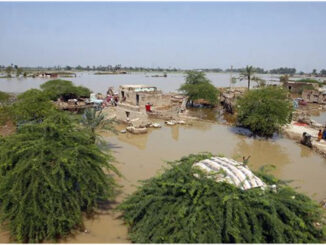
NEW DELHI (TIP): It was around 4.30 am on July 1 when a Pakistani suicide bomber crossed the Line of Control and blew himself up about 25 meters from an Indian Army picket at Saujiyan in the Poonch sector of Jammu and Kashmir. Other than the bomber, there were no casualties. A week later, in the same area, a Pakistani improvised explosive device – a roadside bomb – proved more lethal and killed an Indian Army porter.
India believes these attacks, and other such activity along the de facto border and inside Jammu and Kashmir, are part of a deliberate Pakistani game plan to push in as many militants as possible across the LoC. The goal of all this: escalate violence in the run-up to and possibly disrupt the Jammu and Kashmir Assembly elections next year. On the other side of Pakistan, though this may not seem obvious to people in India, is a related attempt by Rawalpindi to use the same terrorists to drive India out of Afghanistan. US intelligence had confirmed to India that Lashkar e Taiba cadre were being moved into the provinces of Kunar and Nuristan in expectation of the US troop withdrawal from Afghanistan next year.
The recent suicide bomb attack on the Indian consulate in Jalalabad which killed a dozen people was part and parcel of this larger strategy. “Pakistan is using Lashkar to target Indian interests in Kabul,” said a senior Indian official. “The Jalalabad attack was orchestrated by Lashkar.” Pakistan is similarly transferring militant cadre recruited from its Khyber Paktunkhwa province to boost militant ranks in the Kashmir Valley. The broad Indian assessment is that the LoC and Kashmir in general have seen relatively low levels of Pakistani action because Rawalpindi was forced to divert as many as 150,000 troops to the Pakistan-Afghan border. With the US troop withdrawal approaching and Pakistan sensing that it may soon have a friendly regime ensconced in Kabul, the Pakistani army and Lashkar are once more concentrating on destabilizing Kashmir.
Lashkar chief Hafiz Sayeed declared this in a recent India Today interview saying, “Full-scale armed jihad will begin soon in Kashmir after American forces withdraw from Afghanistan.” Kashmir is starting to simmer again. Attempts by Lashkar’s border action teams, groups that are backed by the Pakistani Army, to ambush Indian Army patrols have gone up this year. The decapitation of two soldiers in Krishnaghati area of Poonch sector on January 8, 2013, and the recent killing of five Indian soldiers in the same sector on Tuesday morning are just two of the more bloody examples. “The escalation is evident from the fact that till July 2012 only 13 infiltrators had been killed but during the same period this year more than 23 infiltrators have been killed on the LoC,” said a source.
“There have been no less than 10 border actions undertaken by Pakistan Army backed terrorists on the Jammu LoC ,” said a senior official. He warned that the infiltration figures are expected to rise this month. That is along the border. The situation inside the Valley has become equally violent. There have been two definitive suicide attacks by Lashkar cadres this year inside Jammu and Kashmir – the first in three years. A fidayeen attack on Central Reserve Police Force camp at Bemina in Srinagar on March 14 and an attack on Indian Army jawans at Hyderpora bypass a day before Prime Minister Manmohan Singh’s June 25 visit to Kashmir.
Indian intelligence conducted a security review in Kabul days before the Jalalabad attack. The then home secretary RK Singh flew down to Srinagar on June 20 to brief army and police about a threat against a police station on the eve of Singh’s June 25 visit. “The Poonch action shows that Pakistan Army is opposed to Prime Minister Nawaz Sharif normalizing ties with India and is also connected to the appointment of General Parvez Kiyani’s successor in November,” said a senior official.




Be the first to comment